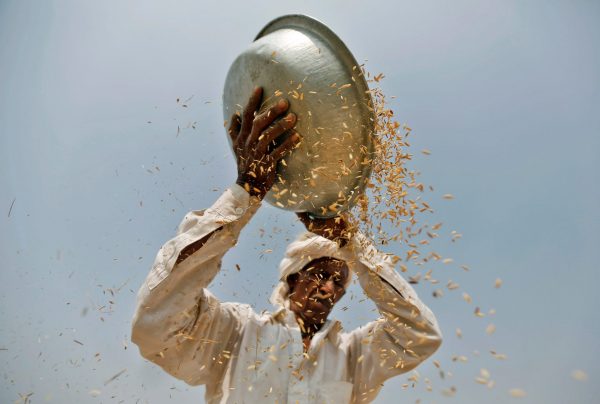The main contention of the United States is that the support that India provides to rice was consistently above 70 per cent of the value of agricultural production since 2010–11 and above 60 per cent for wheat during the same period. These levels of subsides, claims the United States, were way above the 10 per cent limit imposed on India by the AoA.
This affront on India’s farm subsidies provides an opportunity to expose the mala fides of the United States, and also the illogicality of the subsidies’ regime of the AoA. The AoA was crafted primarily by the United States and the members of the European Union to serve their interests, while developing countries like India were reduced to mere bystanders.
Although the WTO abhors the use of subsidies, it allows this instrument of trade policy to be used for agriculture. The subsidies regime included in the AoA has three forms of subsidies, ranging from those that were considered ‘non-distorting’ to those that seriously ‘distorted’ markets
The only thing that differentiates the subsidies is that, while there is no limit for spending on the non-distorting subsidies, spending on the distorting subsidies has to be limited to 10 per cent of the value of agricultural production for the developing countries, and 5 per cent for the developed countries. Significantly, the AoA provides no means to assess the impacts of these forms of subsidies on the market.
An important facet of the subsidies regime of the AoA was that developing countries were relying more on the so-called ‘distorting’ forms of subsidies, both when the regime was introduced in 1995 and in the years thereafter, while the United States and the European Union used more of the non-distorting categories of subsidies.
Subsidies provided by WTO members are calculated with reference to international prices, which are assumed to be competitive prices. In the negotiations leading up to the adoption of the AoA, the international prices of each individual commodity during 1986–88 were agreed to as the fixed external reference price (ERP). The market price support has to be the difference between the current MSP and the international prices of 1986–88.
What does this mean for India? India’s MSP for common varieties of rice, which was US$112 per tonne in 1986–88, had increased to US$334 per tonne in 2014–15, while the external reference price remained static at the 1986–88 value of US$263 per tonne. India appears to be exceeding the agreed to limits. But Comparing India’s current MSP with an ERP that is three decades old is simply illogical. The United States is perpetuating a patently absurd system for assessing the levels of farm subsidies merely because it can be used as an instrument to threaten developing countries. When this is their objective, economic logic is the biggest victim.
India and other developing countries have consistently argued that either the base period for determining the ERP must be brought up to a more recent set of years, or the ERP must be inflation adjusted. Both these arguments have been rejected by the United States simply because it has shifted most of its farm subsidies into non-distorting subsidies, spending on which can be limitless. As a result, the United States has increased its farm subsidies from about US$61 billion in 1995 to US$139 billion in 2015, which is a nearly 128 per cent increase in two decades.
The document tabled by the United States also misrepresents the reality of India’s market price supports on at least three counts.
First, the United States has calculated India’s market price support in Indian rupees, whereas India has been reporting the same in US dollars. Consequently, India’s figures are much smaller because of the consistent depreciation of the Indian rupee. The United States insists that the market price support must be reported in the domestic currency, which is an erroneous reading of the AoA provisions.
A second misrepresentation in the US document is that it provides data on subsidies for several Indian states. There is no such requirement in the AoA — subsidy numbers are presented for the country as a whole.
A third misrepresentation is the argument that India has breached the 10 per cent limit for individual crops. The correct interpretation is that the spending limit is on Amber Box subsidies taken as a whole, including subsidies on fertilisers and power, among others.
A final point that must be made is that the United States is targeting subsidies that India gives overwhelmingly to small and marginal farmers. India’s subsidies are critical to the protection of these farmers’ livelihoods amidst the present agrarian crisis in India.
Biswajit Dhar is Professor at the Centre for Economic Studies and Planning School of Social Sciences, Jawaharlal Nehru University.
A version of this article first appeared here on the Financial Express.

